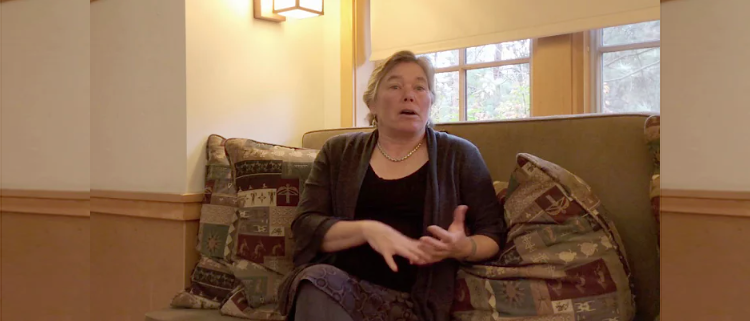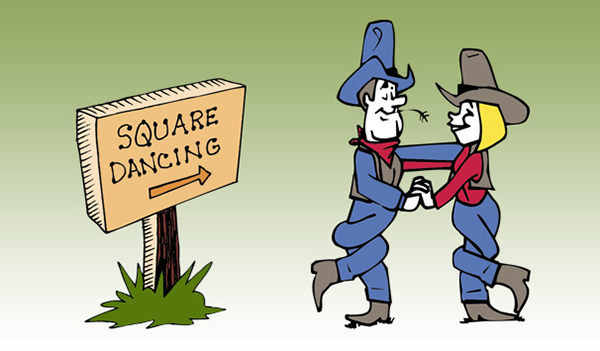‘It’s soul-draining’
||| FROM STAT NEWS at request of ORCAS ISLAND HEALTH CARE DISTRICT |||
BATON ROUGE, La. — Bren Ingle watched through a set of twin glass doors as her patient drew his final, halting breaths, a terrifyingly long pause separating each one. She could hear every haunted exhalation he made, a sound halfway between a snore and a scream of pain.
As part of an emergency response team maintained by the federal government, the 59-year-old nurse has deployed more than a dozen times during the Covid-19 pandemic, to hospitals, clinics, and even cruise ships. It seemed impossible that the death rituals that have defined her nightmarish 18-month world tour could become more grim. But the current wave, and the utter needlessness of the patient suffering Ingle bears witness to each day, are more devastating than ever.
Now, she is unhooking IV drips from the body of a patient who could have lived. As she removes his catheter, slips off his blood-oxygen sensor, and switches off the monitor that had displayed his heart rate and blood pressure, she admits to experiencing a new level of trauma. Treating coronavirus patients in a post-vaccine world, she says, has added an entirely new layer of despair.
“Ninety-nine percent of the patients being admitted are unvaccinated,” she said. “They’re sicker when they get here. They require more acute care while they’re here. And unfortunately, many of them are not surviving.”
STAT’s rare access to a Covid-19 intensive care ward, a glimpse inside a hospital under siege, highlights the devastation being wrought not only on patients, but also on health workers. Throughout two days spent shadowing Ingle and her colleagues — a unit within the National Disaster Medical System, effectively a National Guard for health care and emergency response — it became readily apparent that she and her colleagues had received perhaps their toughest deployment yet.
As they’ve traveled from state to state, watching patients die at each stop along the way, Ingle and her colleagues have tried to stay resilient. But as hospitals become overrun once more, this time with a new wave of younger, sicker, and almost entirely unvaccinated patients, their perseverance is turning to distress. It’s their job to save lives — but for America’s most battle-tested health workers, there is no denying their new reality: The patients they are moving heaven and earth to treat are the patients whose decisions are prolonging the pandemic.
“It’s extremely frustrating, the ignorance of people not getting the vaccine because they don’t believe in it, or they don’t think it’ll help them,” Ingle said. “You have the chance to get them. They’re free. And people still refuse.”

Medical staff don protective gear as they prepare to intubate a patient recently admitted to one of the several Covid-19 intensive care wards at Our Lady of the Lake Regional Medical Center, in Baton Rouge.ALEX HOGAN/STAT
No team of health workers in this country feels the brunt of Covid-19 more acutely than Ingle’s unit. The National Disaster Medical System is the team of clinicians called to action when things go wrong — and for the past year and a half, nothing has gone right. Time and time again, they have been dispatched to staff hospitals short on nurses or set up parking-lot field hospitals in states where no patient beds remain.
Now, though, they are being asked to upend their lives yet again — leaving behind their homes, jobs, and families to care for patients like the ones at Our Lady of the Lake Regional Medical Center, almost all of whom decided against vaccination.
This time, when the call came, Ingle didn’t have time to reflect. She didn’t consider saying no. She didn’t consider her exhaustion, or her frustration with people in Louisiana or her home state of Tennessee who weren’t vaccinated and, now, are lying face-up in hospital beds, a maze of tubes, drips, and sensors blanketing their bodies.
When her team commander texted her at 10 p.m. asking whether she was available to deploy to a Covid-19 intensive care ward in Louisiana, she simply said yes. Then came her marching orders.
“She texted me back, saying, OK, your flight leaves at 6 a.m,” Ingle recalled. “I quickly had to do my laundry, re-pack a bag, notify my employer, get the proper documentation to my supervisors, wait for my orders to come through so my supervisors will see it’s an official deployment, and stay up all night and wait for the plane to leave.”
Ingle works full-time at a hospital in Chattanooga. Since 2003, though, she has served as an NDMS reservist prepared to deploy on command to disaster sites around the country and, sometimes, around the world.
NDMS staff are eligible for benefits typically associated with military reservists — in essence, when the federal government comes calling, Ingle is entitled to leave her job at CHI Memorial Hospital in Chattanooga and deploy to wherever she’s needed without fear of professional consequences. She and her NDMS colleagues are paid for their work, though Ingle’s hourly rate is lower than her hospital jobs, she said, but the 84-hour weeks ensure she doesn’t take a financial hit.
The federal government has deployed NDMS units like hers dozens of times the past two decades, including to Louisiana in 2005 to deal with Hurricane Katrina’s aftereffects, and in 2010 to staff American hospitals treating victims of the devastating earthquake in Haiti.
Ingle, herself, has traveled the world as a U.S. medical reservist — most recently on a deployment in February 2020 to Yokohama, Japan, to help test, treat, and repatriate Americans on the Diamond Princess cruise ship. She has deployed, twice, to Navajo Nation in New Mexico, twice to Texas, once to California, and once to Washington, D.C., among other missions.
She is far from the only NDMS veteran. Stephanie Flood-Thomas, a physician assistant and Ingle’s team commander in Louisiana, has also served dozens of missions — she even met her husband on a deployment to Puerto Rico in the aftermath of Hurricane Maria.
This particular assignment, however, is unique. It was not precipitated by an earthquake, storm, or wildfire, or even by some unpreventable new pathogen. Instead, it was made necessary largely by Louisianans’ refusal to be vaccinated.
“Our typical deployment would be a hurricane response, or if there’s some type of local disaster where the health infrastructure has been compromised,” said Flood-Thomas. “The Covid response is something that’s novel to us.”
As the Delta variant spreads and Louisiana case rates continue to skyrocket, state officials have called on the federal government to help. NDMS is the answer to that call: The program has deployed “thousands” of staffers on hospital missions, according to a spokeswoman, including current missions to five sites in Louisiana, two in Mississippi, and two in Arizona.
The teams of khaki-clad NDMS health workers in military-esque fatigues give the hospital a bizarre, wartime feel. Often, teams travel as a complete unit, but sometimes circumstance requires a combination: Reservists within the unit Flood-Thomas command last week hailed from California, Virginia, Tennessee, and Florida, among other states.
Their task is a grim one. In Louisiana, much of the NDMS staff was assigned to patients already unconscious and reliant on a ventilator to breathe. Increasingly, the bulk of their task is simply to make their patients’ deaths as painless as possible.
The hospital is short on staff because of a mixture of employee burnout and positive coronavirus tests among their own health workers. Last month, the state formally requested backup from the federal government, which promptly deployed emergency staff to this city of 225,000 so the hospital could continue admitting patients.
One physician assistant working a two-week shift in Baton Rouge, Erin Lennon, said she received her request to deploy to Louisiana while halfway through a noon-to-midnight shift at her full-time job in Colorado. Like Ingle, she was given a night’s notice to pack and board a plane at the crack of dawn.
She came despite personal risk — she is pregnant with a child due in November — and despite the pent-up exhaustion of a year and a half of work treating Covid-19 patients.
“It’s soul-draining,” she said. “But we all have our ethos and our calling for why we’re doing this. This is what we trained for. This is what we do. I can’t walk away from something that’s important just because it’s hard.”

Health workers deployed by the National Disaster Federal System work a desk shift at Our Lady of the Lake Regional Medical Center.
Exhausted as hospital workers across America are, the constant stream of young, unvaccinated, and severely ill patients has no end in sight.
In a single five-minute stretch on Wednesday, nurses at Our Lady of the Lake wheeled three new patients into an intensive care ward designated solely for Covid-19 patients.
One of the patients, whose oxygen levels had dropped precipitously low, was soon placed on a ventilator. Across the room, as a separate group of doctors and nurses prepared to intubate another patient, a nurse scurried to bring a face shield to a colleague who she worried needed more protective gear. A supervisor ordered all but a handful out of the room to limit the staff’s exposure. But then, a rare victory: the third patient’s breathing improved, and she avoided, for the moment, the all-too-common move to ventilation.
The most common way patients leave the Covid-19 ward is death. Others leave not because their condition improves, but because they’ve been sick for so long that they’re no longer considered infectious, meaning they can be transferred to an ICU for other patients. A select few are “stepped down” to a medical-surgical nursing unit because their condition improves. But lately, staff expect few, or even none, to make full recoveries.
“It’s always your wish as a nurse that your patient walks out,” said Ingle, the Tennessee-based nurse. “I don’t see that happening with my patients.”
Our Lady of the Lake, Louisiana’s largest hospital, was treating 211 Covid-19 patients as of early this week, roughly 65 more than at the state’s initial peak in April 2020.
For hospital staff, the situation has deteriorated to a point far worse than the pandemic’s first wave in April 2020, or a second, more devastating one in January. So many patients need extra oxygen that the hospital last week ordered an additional 25-foot-long tank, delivered overnight from Pennsylvania via flatbed truck. The hospital’s supply of ventilators is dwindling.
“In my entire career, I have never seen this many drips hanging on patients in the entire unit,” said Flood-Thomas, who has 10 years of experience as a physician assistant in emergency settings. “It’s every single patient, really.”
Our Lady of the Lake is not alone. The U.S. is currently recording over 110,000 new Covid-19 cases per day, nearly 10 times the case rate in mid-June.
The outbreak is driven in large part by many Americans’ continued refusal to receive any of the three available Covid-19 vaccinations, which have been available to older adults for over six months and to the broader public since early spring. Under 60% of eligible Americans across the country are fully vaccinated; some 70% percent have received at least one dose.
In Louisiana, the consequences of remaining unvaccinated are becoming obvious: The unvaccinated account for roughly 9 in 10 current hospitalizations. Since the state’s immunization campaign began, unvaccinated Louisianans account for a staggering 98.4% of all Covid-19 deaths.
Just 38% of the state’s population is fully vaccinated. And while local vaccination rates have ticked upward in recent weeks, much of the state’s vaccine supply continues to go unused: As many as 100,000 Pfizer doses sat idle as of earlier this month. Louisiana clinicians, as a result, are overwhelmed.
“If people were vaccinated, it would dramatically decrease the workload,” said Sen. Bill Cassidy, the state’s Republican senator, a physician who spent much of his medical career at Our Lady of the Lake. “I’m just continuing to ask people: Think not only of yourselves, but of others.”
READ FULL ARTICLE: Health workers deployed to Covid hot zones are overwhelmed by deaths among the unvaccinated







